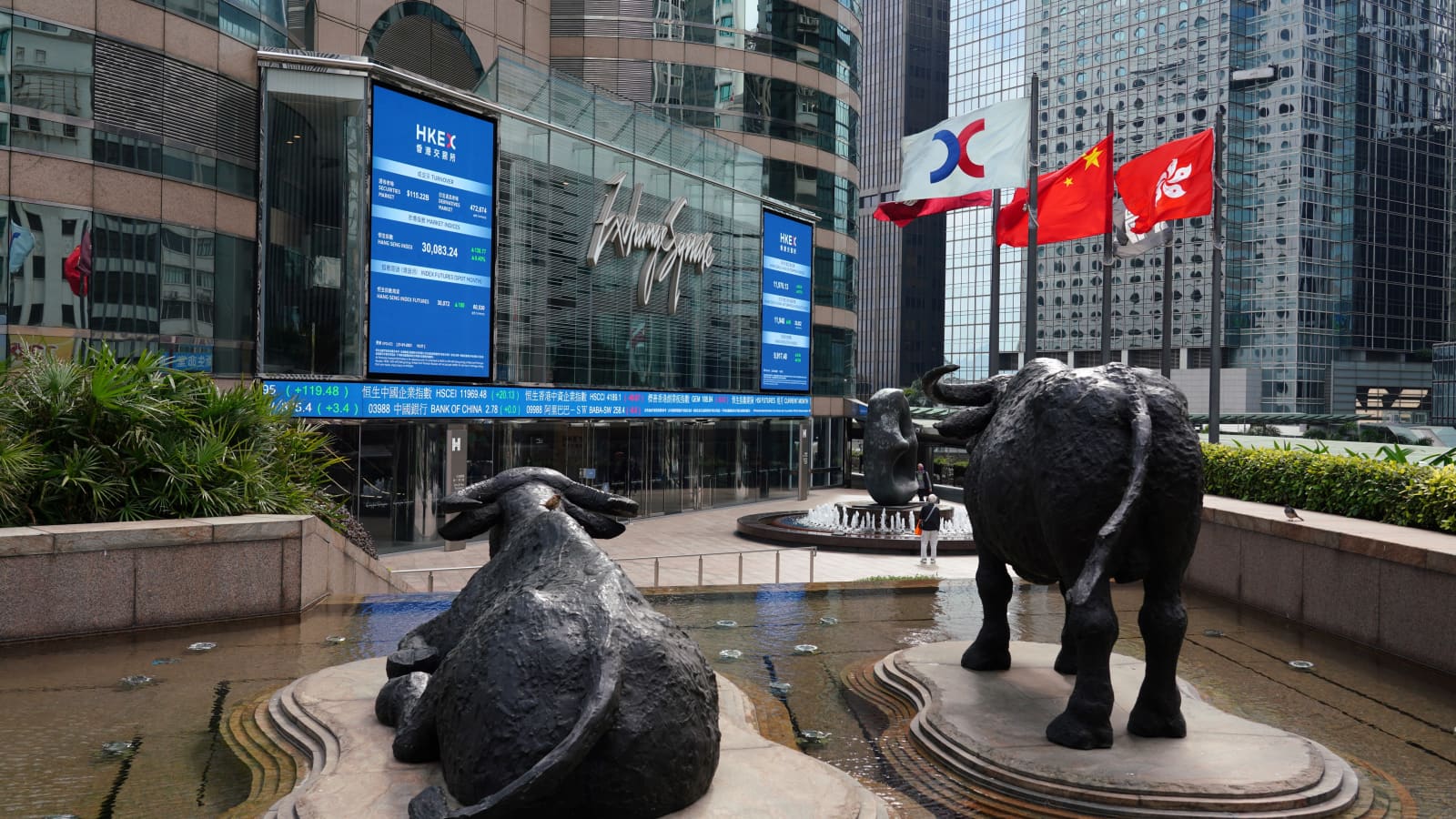Asia-Pacific Markets Climb Despite Wall Street Slump Amid Renewed U.S.-China Trade Tensions
Asia-Pacific Markets Climb Despite Wall Street Slump Amid Renewed U.S.-China Trade Tensions
By
Junia Wells
Last updated:
October 15, 2025
First Published:
November 30, 2025

Photo: CNBC
Asia-Pacific markets opened higher on Wednesday, diverging sharply from Wall Street’s overnight declines as investors digested the latest escalation in U.S.-China trade tensions.
U.S. President Donald Trump on Tuesday criticized China for failing to purchase American soybeans, labeling it “an economically hostile act” and threatening retaliatory measures, including a possible cooking oil embargo. The remarks added renewed uncertainty to global trade flows, keeping volatility elevated. Veteran investor Louis Navellier noted that “volatility remains elevated, and the best explanation is the strained relationship between the U.S. and China.”
Regional Market Performance
Japan’s Nikkei 225 surged 1.53%, with the broader Topix index climbing 1.42%. South Korea’s Kospi rose 2.15%, while the tech-heavy Kosdaq gained 1.35%.
In Australia, the ASX/S&P 200 advanced 0.85%, reflecting optimism in industrial and resource stocks. Hong Kong’s Hang Seng Index added 1.21%, while mainland China’s CSI 300 remained largely flat, weighed down by ongoing concerns over domestic demand and persistent deflationary pressures. India’s Nifty 50 rose 0.43%, extending gains from recent rallies.
China’s Deflation Woes
Economic data from China showed continued weakness in both consumer and producer prices. The consumer price index (CPI) fell 0.3% year-on-year in September, sharper than the expected 0.2% decline, though slightly better than August’s 0.4% drop. Month-on-month, prices rose just 0.1%, below forecasts of 0.2%.
Meanwhile, producer prices continue to reflect prolonged deflation, highlighting sluggish domestic demand and trade-related uncertainties. Economists warn that this deflationary trend could weigh on corporate profits and slow investment if it persists.
Wall Street Reaction
In contrast to Asia’s gains, U.S. equities faced a volatile session. The S&P 500 closed down 0.2% at 6,644.31, despite intra-day swings of nearly 1.9% between its lows and highs. The Nasdaq Composite fell 0.8% to 22,521.70, having dropped as much as 2.1% during the session. The Dow Jones Industrial Average, however, managed a 0.4% gain, adding 202.88 points to 46,270.46.
Investors are also digesting comments from Federal Reserve Chair Jerome Powell, who indicated the central bank may soon halt reductions in its bond holdings while leaving the door open for further interest rate cuts, adding another layer of complexity to market sentiment.
Outlook
Analysts suggest that Asia-Pacific markets are benefiting from regional optimism and selective risk-taking, even as global trade tensions and U.S. monetary policy uncertainty persist. Investors are closely watching developments in the U.S.-China trade relationship, particularly the potential impact on soybean exports, technology supply chains, and tariff policies, which could continue to drive market swings in the coming weeks.
The divergence between Asian and U.S. markets underscores the fragmented nature of global investor sentiment, where local economic factors and corporate earnings can temporarily offset the broader risks of geopolitical friction.
Popular articles
Subscribe to unlock premium content
Gourmet Gold: Micro-Venture Funds and Europe’s Artisan Food Revolution

Artificial Elegance in Fashion

Ferrari’s Craft of Desire

Gourmet Gold: Micro-Venture Funds and Europe’s Artisan Food Revolution

Artificial Elegance in Fashion

Gourmet Gold: Micro-Venture Funds and Europe’s Artisan Food Revolution









